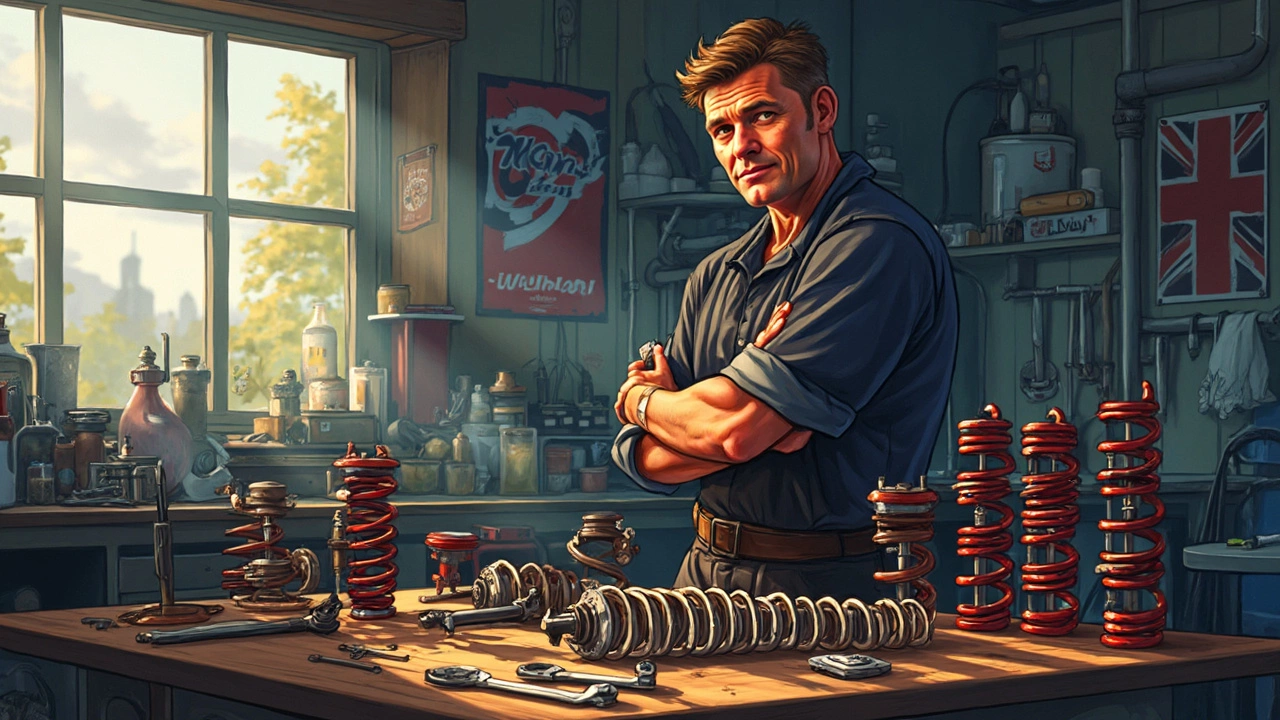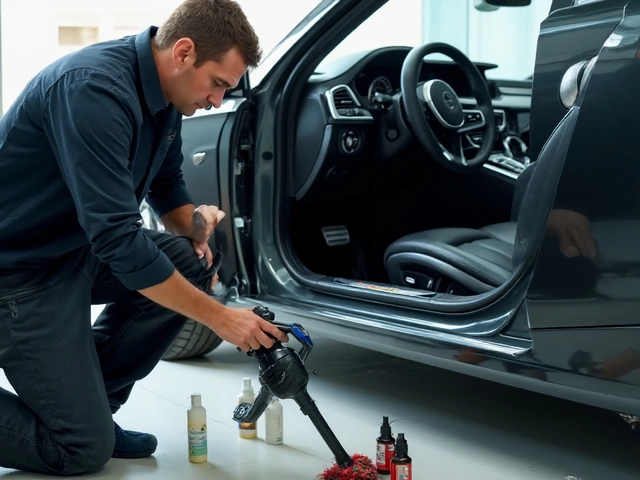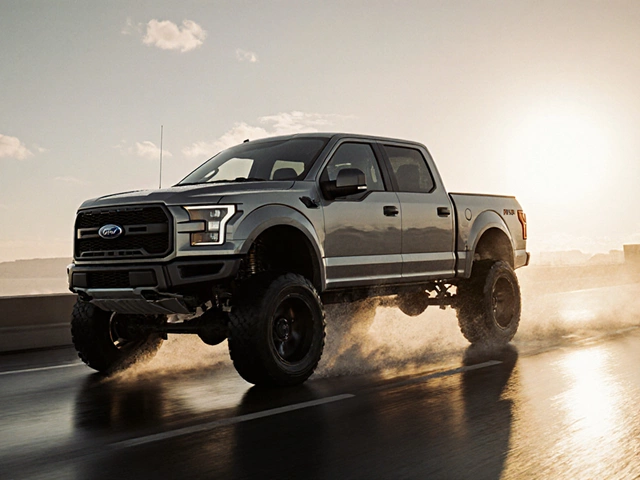Thinking about upgrading your car’s suspension, huh? It’s a big decision, like choosing between tacos and burritos. You’ve got coilovers on one side and lowering springs on the other. Knowing what each brings to the table can save you time, money, and maybe a bit of heartache.
Coilovers and lowering springs both promise to enhance your ride, but they do so in different ways. Coilovers can be super flexible, allowing you to tweak the height and dampening. This means they can handle different driving conditions like a pro. But, let’s be real, they can also be pretty complex to install and a bit heavier on the wallet.
On the flip side, lowering springs are the straightforward, cost-effective choice. They lower the car’s center of gravity, improving handling and giving it that sleek look without breaking the bank. However, they don’t offer the same level of adjustability as coilovers. It’s kind of a set-it-and-forget-it deal.
- Understanding Coilovers and Springs
- Benefits of Coilovers
- Advantages of Lowering Springs
- Real-World Scenarios
- Making the Right Choice for Your Car
Understanding Coilovers and Springs
If you've been hanging around car forums or talking to car enthusiasts, you've probably heard about coilovers and springs. These are two crucial components in your car's suspension system, and choosing between them can often be confusing.
Coilovers, short for coil spring over shock, are like the Swiss Army knife of car suspension. They're a combination of a shock absorber and a coil spring assembled as one unit. This setup allows for adjustable ride height and damping, which means you can customize the stiffness and responsiveness to fit your driving style. So, if you're someone who wants to switch it up from track days to daily driving without much hassle, coilovers can be your best buddy.
They're not just about flexibility, though. Coilovers can also improve your car's handling by lowering the car's center of gravity. But remember, this comes at a cost. Coilovers can be more expensive and trickier to install than traditional springs.
On the other hand, we have lowering springs. These are basically coil springs designed to sit lower than the factory setup. They're a simpler and more affordable way to lower your ride height, improve stability, and give your car that aggressive look without much fuss. Installation is generally easier, and aftermarket springs are widely available.
However, lowering springs lack the adjustability of coilovers. Once installed, those springs are set for good. They're perfect for folks who want a one-time, low-maintenance solution to upgrade their ride without diving into extensive modifications.
If you're considering performance aspects, coilovers are your go-to for their adaptability and precision. But if ease and budget are higher up your priority list, lowering springs might be just what you need. When deciding, consider your driving style and what you want out of your car. Both options have their own merits and can significantly change your driving experience.
Benefits of Coilovers
Alright, so you’re thinking about coilovers, huh? These bad boys offer a bunch of perks that can seriously transform your driving experience. Let’s dive into why they might be the perfect fit for your ride.
One major plus of coilovers is their adjustability. You can fine-tune your car’s ride height to fit various driving situations, like high-speed racing or cruising through speed bumps in the city. Talk about versatility! This flexibility helps you adapt your vehicle's performance without switching parts every time.
But that’s not all. Coilovers generally deliver better handling compared to traditional springs. They offer improved stability and control, especially during cornering, giving you that tight and responsive feel. It’s like leveling up your driving game.
If you're ever curious about dialing in your setup, coilovers are usually designed with camber and dampening adjustments. Camber can be tuned to reduce tire wear and enhance grip, while dampening adjustments let you soften or stiffen the ride based on preference or road conditions.
Now, let’s talk durability. Coilovers often come as full kits designed specifically for your car model, providing a level of reliability and precision fitment that generic lowering springs can’t always match.
Still not convinced? Here’s a little data nugget for you: In a driver satisfaction survey, enthusiasts reported a 25% increase in handling satisfaction when switching from regular shocks to coilovers. Now that’s some serious feedback!
However, keep in mind that all these perks come with a price tag and the installation can get a bit technical. But for those who see their car as more than just a way to get from point A to B, the investment might just be worth every penny.

Advantages of Lowering Springs
So, you’re thinking of giving your ride an upgrade without going overboard on complexity? Lowering springs might just be your new best buddy. These springs are pretty easy on the budget and offer tangible benefits for everyday driving.
First off, they improve your car's handling by lowering its center of gravity. This means less body roll when you're taking those sharp corners. Imagine feeling that enhanced control every time you maneuver through a curve; it’s like your car suddenly gained some ninja moves!
Installation? A breeze compared to those high-tech coilovers. You won’t necessarily need a professional for installation if you’re handy with tools, which could save you extra bucks on labor costs. But, if DIY isn't your thing, any auto shop should know how to handle it without a hitch.
Need a boost in aesthetics? Lowering springs give your car that sweet, sportier look by reducing the wheel gap. Picture your car looking sleek and stylish, turning heads even when parked. Plus, they fit snugly over your stock shocks, meaning you don't have to overhaul your entire suspension system to get that lowered appearance.
Of course, while they don't offer the customizable ride height that coilovers do, lowering springs afford a reduction in ride height that can satisfy most drivers looking for style and performance without fuss. They strike a good balance if you’re looking for something simple yet effective.
In summary, if you're all about getting a nicer ride quality, better looks, and more confident handling—all on a reasonable budget—then lowering springs are definitely worth your attention. They're a straightforward, reliable way to enhance your driving experience without diving into the complexities and costs associated with coilovers.
Real-World Scenarios
Alright, let’s dig into some real-life situations where choosing between coilovers and springs makes a big difference. You’re not just picking parts; you’re investing in how your car feels every day.
Imagine you’re taking your trusty sedan for a weekend track day. Here’s where coilovers shine. They let you adjust your car’s ride height and stiffness for better cornering and less body roll. If the track is bumpy, no problem. Just tweak the settings a bit. You’re not stuck with a one-size-fits-all solution.
Now, say you’ve got a daily driver, a car for commuting and maybe some spirited driving on twisty roads. Lowering springs could be perfect. They reduce the car’s center of gravity, which is great for handling on winding roads, and gives your ride that sporty, tucked-in look. Plus, they’re kinder on the budget, which leaves more cash for other mods.
Let’s throw some numbers your way for perspective. A simple street setup with lowering springs might set you back around $150 to $400, while a decent set of coilovers can start at $800 and zoom up to a few thousand. Your wallet will notice.
| Component | Cost Range |
|---|---|
| Lowering Springs | $150 - $400 |
| Coilovers | $800 - $3000+ |
Remember, if you’re setting up your car for specific activities, like drifting or rally racing, coilovers are generally your go-to. You get that precision and adjustability needed for different surfaces and conditions.
So, think about how you use your car day-to-day. Are you looking for easy, affordable handling improvements, or do you need the fine-tuned control that coilovers offer? It’s like choosing the right tool for the job, ensuring your ride handles just the way you want it to.

Making the Right Choice for Your Car
So, how do you decide whether to go with coilovers or springs? It's like picking the right tool for the job—different needs call for different solutions.
If you love tinkering and customizing your ride for every road trip, coilovers could be your best friend. They let you adjust ride height and stiffness to cater to different terrains. Whether you're hitting the track or just cruising the city, this gives you lots of control. Keep in mind, though, this flexibility comes at a cost, not just in cash but time spent on adjustments and maintenance.
On the other hand, if you're all about ease and affordability, lowering springs might be the way to go. They're a simple swap with your factory setup, making them beginner-friendly. Plus, they give your car a sleeker look and better handling without too much hassle. Just remember, what you gain in simplicity, you lose in adjustability.
Here are a few questions to ask yourself:
- What's your budget? Coilovers can be pricey.
- Are you planning to adjust the suspension often?
- How comfortable are you with DIY installations and frequent tweaks?
- Do you want to prioritize performance or aesthetics?
If you're still on the fence, talk to a pro or hit up forums where fellow car enthusiasts share their experiences. Sometimes, real-world feedback is what you need to make the right call.
Whether it's the tunable magic of coilovers or the set-and-forget ease of springs, knowing what fits your lifestyle and driving goals can lead to a smoother ride, literally and figuratively.






